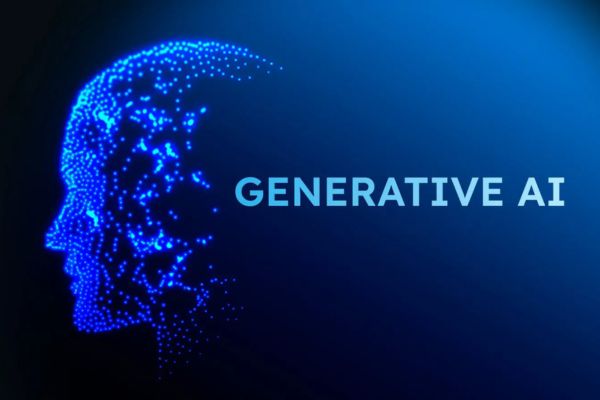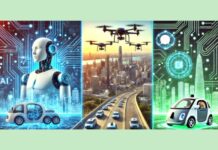The global generative AI market size is forecasted to reach around USD 317.45 billion by 2034 and is growing at a compound annual growth rate (CAGR) of 33.58% from 2025 to 2034. This explosive growth is driven by advancements in large language models (LLMs), generative design, text-to-image synthesis, and multimodal AI systems.
Key Drivers
- Rising enterprise adoption: Businesses in healthcare, finance, media, and manufacturing are leveraging generative AI to automate content creation, personalize services, and boost efficiency.
- Advancements in AI infrastructure: The expansion of cloud computing, GPUs, and open-source AI models (e.g., GPT, Stable Diffusion) accelerates innovation and deployment.
- Demand for creative automation: From marketing content to product design, organizations are using generative AI to scale creativity without proportional labor.
- Integration with existing workflows: Seamless integration with tools like Microsoft 365, Google Workspace, and design software drives mass enterprise usage.
Challenges
- Ethical and legal concerns: Issues around misinformation, copyright infringement, and deepfakes.
- Data privacy and bias: Generative models risk replicating biased or sensitive data from training sets.
- Regulatory uncertainty: Emerging regulations in the EU, U.S., and globally may affect model deployment and usage.
- High compute costs: Training and running large models require significant investment in infrastructure.
Uses of Generative AI by Industry
1. Healthcare
- Medical imaging: Enhancing MRI, CT scans, and X-rays with AI-generated visuals to aid diagnosis.
- Drug discovery: Designing new drug molecules and predicting interactions faster than traditional methods.
- Clinical documentation: Automating patient notes, discharge summaries, and report generation.
- Personalized treatment plans: Creating tailored care pathways based on patient data and predictive models.
2. Finance & Banking
- Fraud detection: Synthesizing transaction patterns to identify anomalies.
- Algorithmic trading: Generating new trading strategies using predictive models.
- Customer service: AI-generated responses for chatbots and virtual assistants.
- Financial reporting: Automating the generation of reports and summaries from raw data.
3. Retail & E-commerce
- Product descriptions: Automatically generating detailed and SEO-friendly product listings.
- Customer personalization: Creating personalized recommendations and marketing content.
- Visual merchandising: Designing synthetic product images and promotional banners.
- Inventory planning: Simulating demand scenarios and optimizing supply chains.
4. Manufacturing
- Design prototyping: Generating 3D models or design variations using generative design.
- Predictive maintenance: Simulating failure scenarios to enhance maintenance strategies.
- Process optimization: Creating optimized workflows based on real-time data.
- Training: Generating virtual environments for employee training.
5. Media & Entertainment
- Content creation: Writing scripts, generating music, or creating storyboards.
- Video game development: Creating assets, narratives, and environments procedurally.
- Voice synthesis: Generating realistic synthetic voices for dubbing or narration.
- Marketing campaigns: Crafting personalized ads, slogans, or visuals at scale.
6. Education
- Adaptive learning content: Generating personalized quizzes, study plans, and lessons.
- Virtual tutors: AI-driven assistants that provide feedback and explain concepts.
- Language learning: Simulating conversations or generating practice exercises.
- Content summarization: Condensing long texts into concise learning materials.
7. Legal
- Contract drafting: Generating contract templates or first drafts.
- Legal research: Summarizing case law or predicting legal outcomes.
- Compliance reporting: Automatically producing reports based on changing regulations.
- Litigation support: Creating scenario simulations for case strategy planning.
8. Real Estate
- Property listings: Writing compelling property descriptions.
- Virtual staging: Generating digital interiors for vacant properties.
- Market analysis: Simulating pricing models or investment forecasts.
- Client engagement: Personalized messages and guided property tours using avatars.
9. Automotive
- Autonomous vehicle simulation: Creating virtual driving environments.
- Design engineering: Generating vehicle body designs and aerodynamic optimizations.
- Marketing: Producing custom videos, brochures, and interactive content.
- Voice assistants: Building conversational AI for in-vehicle systems.
10. Telecommunications
- Network optimization: Simulating data traffic patterns and performance tuning.
- Customer support: Generating AI responses for tier-1 technical support.
- Service personalization: Tailoring content bundles and offers in real time.
- Churn prediction: Simulating user behavior to reduce attrition rates.
Regional Insights
North America: Leading the Global Generative AI Market
In 2024, North America dominated the global generative AI market, capturing approximately 40.8% of total revenue. The region’s leadership is underpinned by substantial investments, a mature technology ecosystem, and world-class research institutions. Widespread adoption across key sectors—such as healthcare, finance, and entertainment—is driving innovation and productivity.
Regulatory frameworks around data privacy and AI ethics are beginning to shape responsible AI deployment, fostering trust and long-term growth. In Canada, the government’s proactive support for AI innovation and focus on cutting-edge research continues to bolster the region’s competitiveness in the global AI landscape. North America’s commitment to advanced technology development cements its role as a central hub for generative AI evolution.
United States: Driving Innovation and Investment
The United States remains the powerhouse of generative AI development, with broad application across media, finance, healthcare, and more. Home to industry pioneers and research leaders in language models, computer vision, and multimodal AI, the U.S. is setting the pace for global innovation. Massive investments from both the public and private sectors continue to accelerate R&D and market adoption.
In parallel, the U.S. government is playing an increasingly active role in shaping AI safety, governance, and ethical frameworks, further influencing how generative AI technologies are developed and deployed nationwide.
Europe: Ethical AI and Strategic Innovation
Europe’s generative AI market is on an upward trajectory, driven by a strong regulatory focus on transparency, fairness, and accountability. The European Union’s evolving AI policy framework provides a structured environment for responsible innovation, particularly across automotive, retail, and financial services.
Countries such as Germany and France are making significant investments in AI R&D, aiming to build sovereign capabilities and strengthen their global presence. Generative AI is increasingly leveraged in Europe to optimize customer experience, automate operations, and enhance productivity within a regulated framework.
Asia-Pacific: Accelerating Growth and Government-Backed Innovation
The Asia-Pacific region is witnessing robust growth in the generative AI market, fueled by rapid digital transformation, government backing, and substantial R&D investment. Nations like China, Japan, and South Korea are prioritizing AI leadership, focusing on autonomous systems, robotics, and industrial AI applications.
Generative AI is being widely adopted in e-commerce, manufacturing, media, and telecom, where personalization and automation are essential for scaling operations. National AI strategies and public-private partnerships are fostering a dynamic and competitive ecosystem, positioning Asia-Pacific as a fast-rising force in the global generative AI landscape.
Get report sample PDF@ https://www.cervicornconsulting.com/sample/2396

















